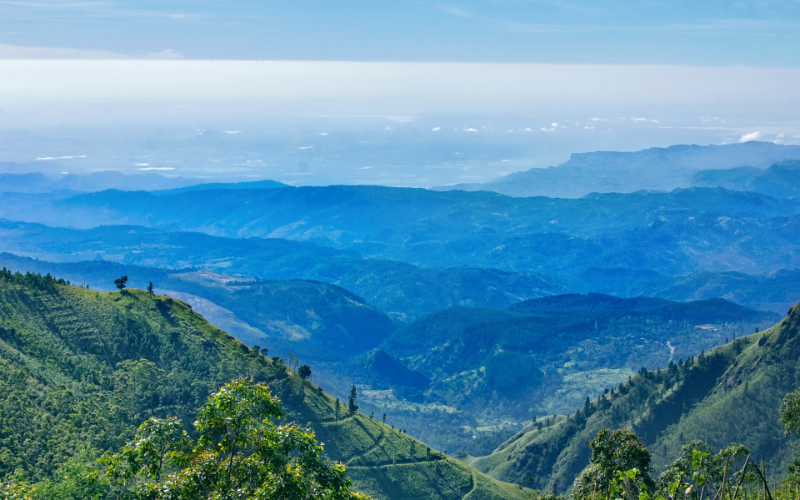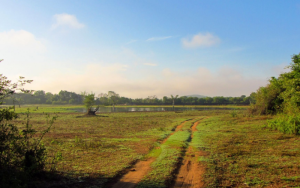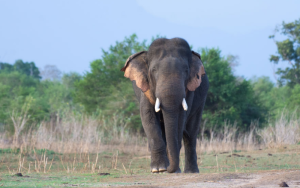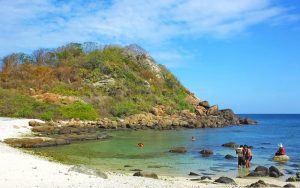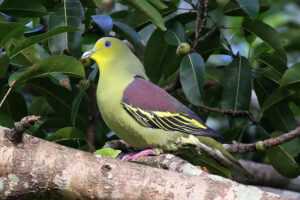Sri Lanka is a small island nation located in the Indian Ocean. Despite its relatively small size, it is home to a diverse array of ecological zones, each with its own unique flora and fauna. In this article, we will explore the different ecological zones of Sri Lanka, their characteristics, and the species that call them home.
Lowland Rainforests
Lowland rainforests are the most biodiverse ecological zone in Sri Lanka. They are found in the southwest and central parts of the country, and are characterized by their high levels of rainfall and humidity. The Sinharaja Forest Reserve, a UNESCO World Heritage Site, is an example of lowland rainforest in Sri Lanka. The forest is home to a wide range of species, including the Sri Lankan leopard, purple-faced langur, and the Sri Lankan frogmouth.
Dry Zone Forests
The dry zone forests are found in the northern and eastern parts of Sri Lanka and are characterized by their dry and arid climate. The vegetation in these areas is adapted to the lack of water and includes species such as the palu (Manilkara hexandra), satin (Chloroxylon swietenia), and weera (Drypetes sepiaria). The dry zone forests are also home to a range of animal species, such as the Sri Lankan elephant, sloth bear, and rusty-spotted cat.
Montane Forests
The montane forests are found in the central highlands of Sri Lanka and are characterized by their cooler temperatures and high levels of rainfall. These forests are home to a range of species that are adapted to the cooler climate, including the Sri Lankan purple-faced langur, the Sri Lankan whistling thrush, and the Sri Lankan spiny tree frog. The Horton Plains National Park is an example of a montane forest in Sri Lanka and is home to the famous World’s End viewpoint.
Dry Zone Scrublands
The dry zone scrublands are found in the northern and eastern parts of Sri Lanka and are characterized by their low rainfall and high temperatures. The vegetation in these areas is sparse and includes species such as the cactus-like Euphorbia antiquorum, and the thorny Ziziphus oenoplia. The dry zone scrublands are home to a range of animal species, including the Sri Lankan elephant, Indian muntjac, and the painted stork.
Wetlands
Wetlands are an important ecological zone in Sri Lanka and are found in various parts of the country. They include areas such as lakes, rivers, and marshes, and are home to a wide range of bird species, including the Sri Lankan blue magpie, the purple heron, and the little cormorant. The wetlands are also home to a range of amphibians, reptiles, and fish species.
Coastal Ecosystems
The coastal ecosystems are found along the coast of Sri Lanka and include areas such as mangrove forests, sand dunes, and coral reefs. These ecosystems are home to a range of species, including the Sri Lankan sea turtle, the saltwater crocodile, and a variety of fish species. The mangrove forests are also important breeding grounds for many species of fish, and help to protect the coastline from erosion.
Conclusion
In conclusion, Sri Lanka’s ecological zones showcase the incredible diversity and beauty of the island’s natural environment. From the lush rainforests of the wet zone to the arid scrublands of the dry zone, each zone offers unique ecosystems and habitats that support a vast array of plant and animal species.
It is crucial to protect and conserve these ecological zones, as they are not only home to Sri Lanka’s biodiversity but also provide essential ecosystem services that benefit humans, such as clean air and water, climate regulation, and soil fertility. By understanding and appreciating these ecological zones, we can work towards sustainable development that balances human needs with the conservation of nature.

